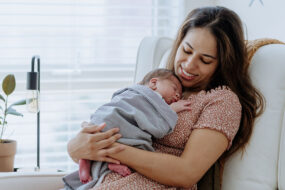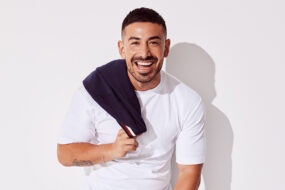3 remarkable Aussie women leading the charge in science
To celebrate International Day of Women and Girls in Science, we chat with three incredible Australians who are trailblazers in their field.
From a world-leader in research working to slow the progression of the fastest-growing disabling disease of the century to a biologist changing the face of frog conservation, there are a slew of female scientists doing groundbreaking work in Australia.
But the world of science hasn’t always been a woman’s domain.
Watch The House of Wellness TV host Jo Stanley’s chat with NASA Aerospace Engineer Sabrina Thompson who designs space suits for women.
Narrowing the gender gap in STEM fields
The Australian Government’s Women in STEM Ambassador Professor Lisa Harvey-Smith says people often forget that, in the past, women were actively excluded from science.
CSIRO Education and Outreach director Ruth Carr says a lack of female role models, as well as unhelpful stereotypes and misconceptions about STEM careers, can also contribute to the gender gap in science.
Yet, Prof Harvey-Smith says, there’s a shift in motion after a national strategy aimed to increase the number of women in STEM was rolled out five years ago.
“The number of women working in STEM has increased by 38 per cent since 2018,” Prof Harvey-Smith says.
The path may still not be a straight line, but these three inspiring female scientists are blazing an impressive trail for women in science.
Prof Carolyn Sue, clinician-scientist

A world-leading clinical researcher in Parkinson’s disease and mitochondrial disease, Professor Carolyn Sue is the inaugural Kinghorn Chair, Neurodegeneration at Neuroscience Research Australia (NeuRA) – a role that will see her establish a centre for Parkinson’s disease patients to improve their clinical care while undertaking critical research.
Prof Sue says Parkinson’s is the fastest-growing disabling disease of the century, and she was drawn to this area of medical science to help improve quality of life for people living with it.
“My current work is focused on providing a new and sustainable source of energy to the brain cells of patients with Parkinson’s disease so that the progression of their disease is slowed down,” Prof Sue says.
“This means they can live longer and healthier lives without the fear of their disease progressing.”
Dr Jaci Brown, climate research scientist

Climate Intelligence Program research director Dr Jaci Brown leads the Climate Science Centre at CSIRO, Australia’s national science agency, and is dedicated to helping humanity understand and manage a world affected by climate change.
“I loved maths at school – I thought I would go into business until I discovered the ocean could be described and predicted using maths equations,” Dr Brown says.
“I quickly found climate science makes a real impact when we collaborate with the end-users of our data.”
Dr Brown explains climate change is bringing more extreme heat events, intense heavy rainfall, longer fire seasons and sea level rise to Australia’s shores.
“Working in climate science is a way to help try and solve the greatest challenge of our time,” she says.
Dr Jodi Rowley, conservation biologist

Curator of Amphibian & Reptile Conservation Biology at the Australian Museum and UNSW, Dr Jodi Rowley is the principal lead on the national citizen science project FrogID, a multi-award-winning conservation initiative that has recorded nearly one million frogs and yielded over 20 research papers.
“It’s all based around the fact that every species of frog has a different call,” Dr Rowley says.
“By downloading the free FrogID app and recording any frogs (you) hear, anyone can help better understand and conserve frogs.”
Considered the most comprehensive and scientifically accurate frog database in the world, FrogID has provided vital data about the impact of environmental disasters and registered two species as endangered, ensuring they benefit from conservation.
The International Day of Women and Girls in Science is celebrated on February 11 – visit Women and Girls in Science to find out more.
More Australians to inspire you:
- 3 Aussie game changers pushing boundaries to inspire others
- Why Dylan Alcott is driven to help young Aussies with disability
- NRL superstars join forces to build mental fitness
- How a joint passion for women’s health is helping Australian girls
Written by Sarah Vercoe.






